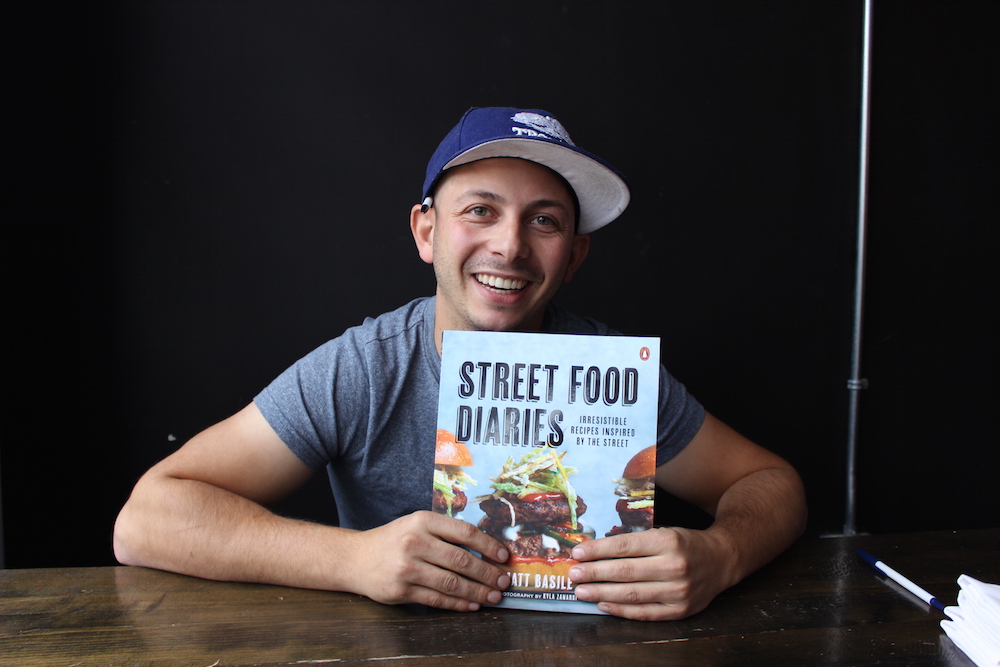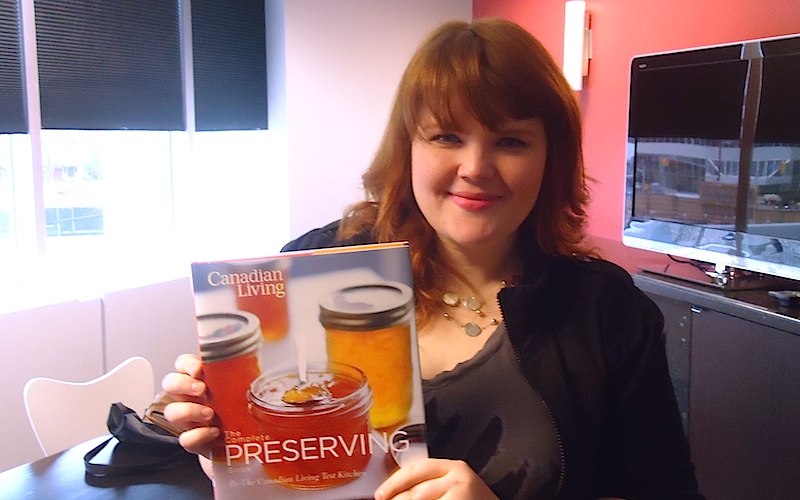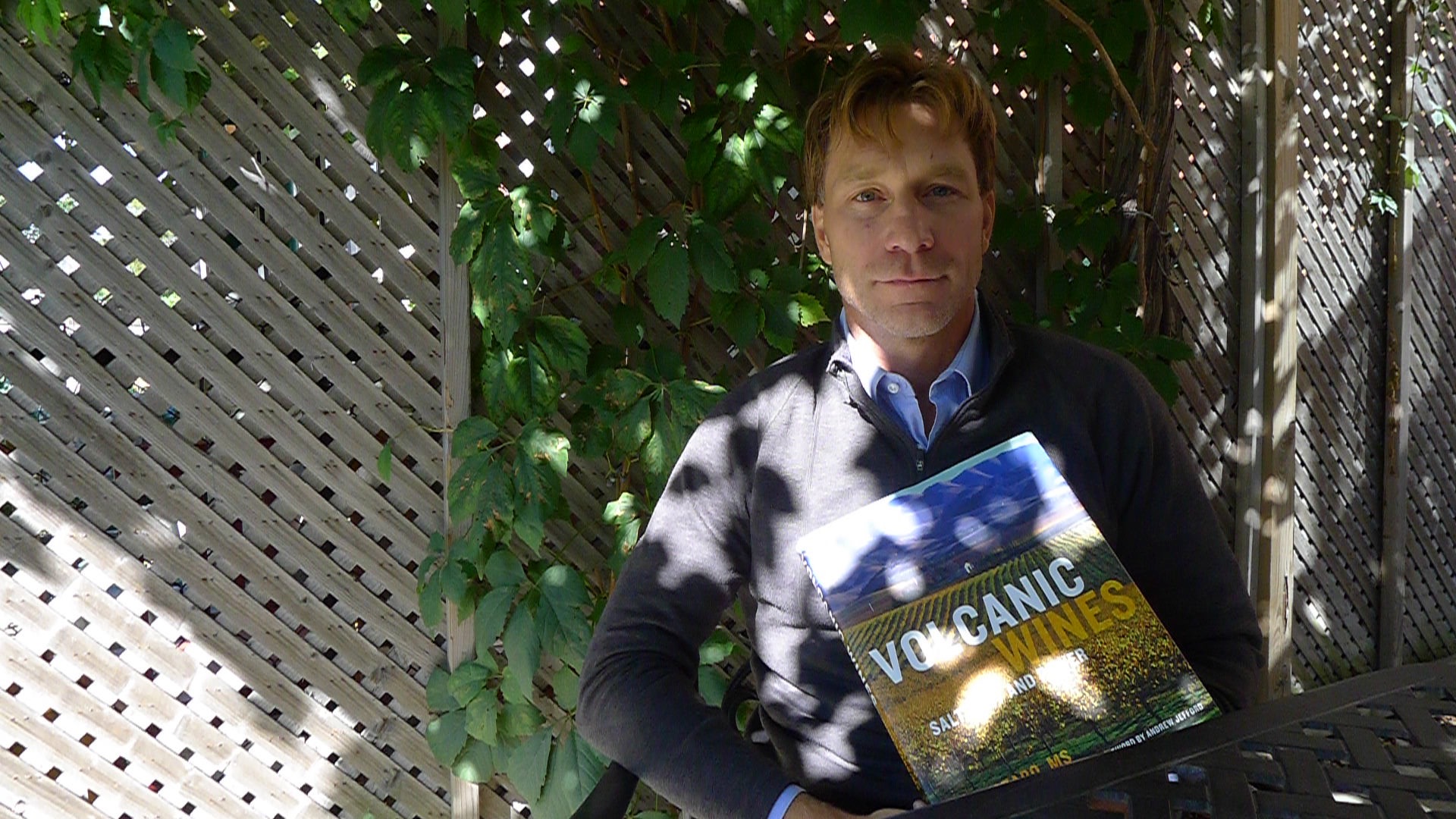Matt Basile, also known as Fidel Gastro, is a busy man. He turned the late night snacks he used to make for his friends into a successful pop-up, which became a successful food truck, which spurred a second career as abroadcast on his show Rebel Without a Kitchen, which led him to put down roots at his Queen Street West restaurant Lisa Marie. But that, as they say, is not all. He recently published Street Food Diaries: Irresistible Recipes Inspired by the Street. With bright and bold photographs by his life and business partner Kyla Zanardi, Street Food Diaries is both a cookbook and a travelogue of the food truck scene across North America. Divided into chapters with names like ‘Stuff on Sticks’ or ‘Pretty Fly for a Fry Guy’, the book is as irrieverent as its author who, after all, invented Pad Thai Fries.
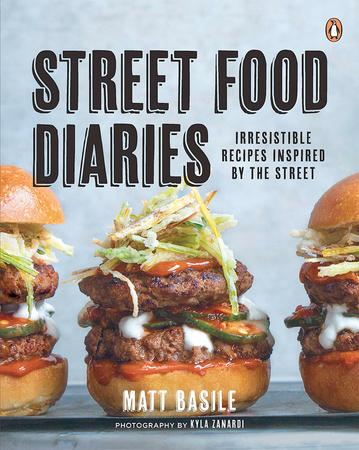 Just back from a flavour seeking trip to Southeast Asia, Basile met me for the interview below late last year at a table at Lisa Marie before the dinner service. Looking relaxed and pleased with his new book, Basile chatted with me about how Street Food Diaries is different from other cookbooks and the chanages in his life in the two years since his last GFR interview.
Just back from a flavour seeking trip to Southeast Asia, Basile met me for the interview below late last year at a table at Lisa Marie before the dinner service. Looking relaxed and pleased with his new book, Basile chatted with me about how Street Food Diaries is different from other cookbooks and the chanages in his life in the two years since his last GFR interview.
The Interview:
This interview has been edited for clarity and style.
GFR: So, what was it like writing the book?
Matt Basile: I did it with Kyla [Zanardi] who is also my girlfriend and business partner, and it was the hardest thing we’ve ever done together. From what I understand, we had a pretty short turn around, but it felt like it took for ever. It took a year from when they said, yes you can make a book, to it’s on the shelves.
GFR: And this is while you were shooting the TV show?
MB: We were already on the road. So, we thought we might as well use the stories, and that was the idea that we pitched: a travel inspired cookbook.
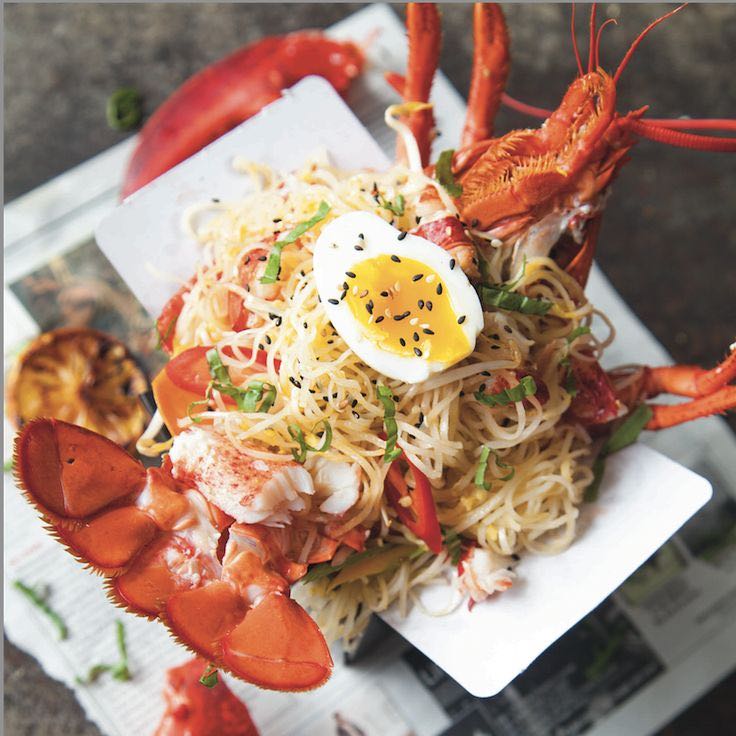
GFR: The photography is amazing. And you get a sense of being on the road, so it’s not a typical cookbook.
MB: Ky killed it.
GFR: And the way you organize the recipes: it’s not a typical breakfast, lunch and dinner configuration…
MB: Right. We played with how we organized and categorized things. The original idea was to do it by city. So, every city would have a chapter. But, it was actually [our editors at] Penguin that suggested we try and organize in a way that would mean something more to the readers. We organized things in a conventional way, and then came back and put our own spin on it. So, the chapter called ‘Sandwiches’ became ’Stuff In Buns’.
GFR: As a reader, it hits you right away that this book is different.
MB: The chapter called ‘I Love Bacon’ speaks for itself! And that was the idea: to incorporate our brand and our voice into something that is quite conventional. Cookbooks are mainly instructional, there meant to serve a purpose, and if we’re meant to master these recipes, then you need to know the bare bones way of doing things. But, I can honestly say that every recipe in there is pretty much our own as far as you’ve never seen them in another cookbook.
GFR: When I think about what you do, it’s very unique. Aren’t you afraid of giving away your secrets?
MB: I never saw it like like that. Our staff was like, ‘Dude! You put Pad Thai Fires in there!’
GFR: I was surprised the recipe was in there and that it’s actually pretty simple.
MB: Yeah. I looked at it from a different angle. Getting our food to be understood meant that we had to put it all in there. We wanted to open the window and allow people into our world. We thought that if you can see that you can actually do all this weird food truck and restaurant stuff at home, then it make us seem more mainstream. I remember, in the beginning, Pad Thai Fries was our response to poutine. Now, however many years later, people know exactly what Pad Thai Fries are, and we can put this cookbook in someone’s hand and say, ‘Here’s exactly what we offer.’ It was a no brainer.
GFR: Now, you’re a self-taught chef, right?
MB: Self-taught. So, for the book I would cook a recipe the way I would do it, and then I would write down my process. Then, I would give it to my head chef to vet it, since he has to teach our staff how to cook the recipes. Then, I had an editor go through the writing of it. But at the end of the day, I did all the writing and Ky did all the photography and food styling. It was us. And there were some crazy days when we would leave [the Lisa Marie restaurant] at night, do a quick 24 hour grocery shop on the way home and work on the book into the morning. And in the winter, you only have from eight in the morning to four in the afternoon of daylight to shoot with. And it was tough because it’s a street food cookbook so that entails being outside for certain amount of time, but it was winter. So, we had to fake being outside sometimes. If we get a chance to do another book, we might do it differently, but it was fun.
GFR: I think it’s a fun book, and I can see why your restaurant customers or TV viewers would want an inside look at how make your food. I can also see how someone who was interested in starting a food truck would want to read it.
MB: Yeah. I give a lot of secrets away about our process and how we do things. And I give out all the recipes. But the book also talks about what happens in other cites and what happens with the food trucks that operate there. I think that if we were to do another book, I would put even more narrative in it. I think I would focus more on the food truck stories. Sometimes I think you have to concentrate on what you’re not before you figure out who you are. We are not going to teach you classic French cooking like coq au vin. We are a street food company that does weird food with a really gritty look and feel.
GFR: Last time we talked, we talked about what it was like running a food truck and all the crazy logistics involved in that. Now, you have restaurant. Is it easier or harder than just having the truck?
MB: It’s definitely different. The biggest difference between a truck and a restaurant is you need more people to execute it. After year and a half of having the restaurant, we have an amazing team that help us bring everything together. In the beginning it was hard to swallow that we couldn’t do everything ourselves, but now it’s obvious. And I think the thing the restaurant really allows for is that the creative ideas we have for new dishes can be more easily executed. Food trucks are all about volume, so you just don’t have the time or the space and equipment to execute some of the dishes you really want to off of the truck. So, the restaurant, and the team, allows our street food roots to be re-invented in a way.
 Malcolm Jolley is a founding editor of Good Food Revolution and Executive Director of Good Food Media, the company that publishes it. Follow him on Twitter or Facebook.
Malcolm Jolley is a founding editor of Good Food Revolution and Executive Director of Good Food Media, the company that publishes it. Follow him on Twitter or Facebook.


